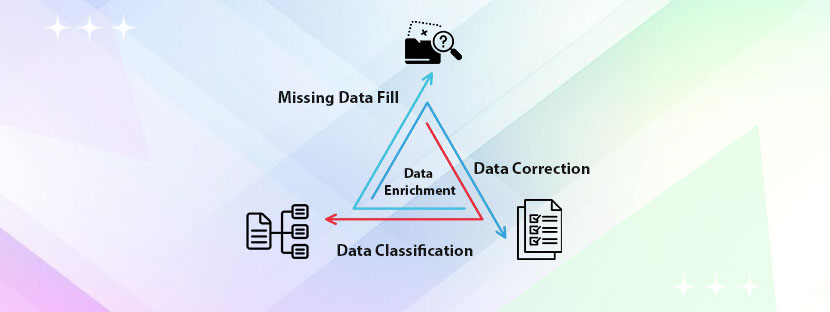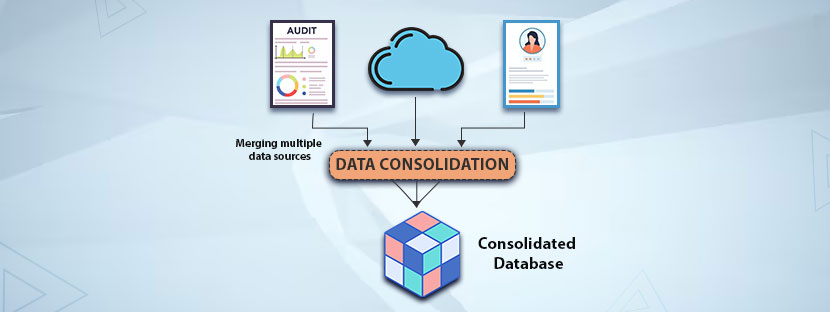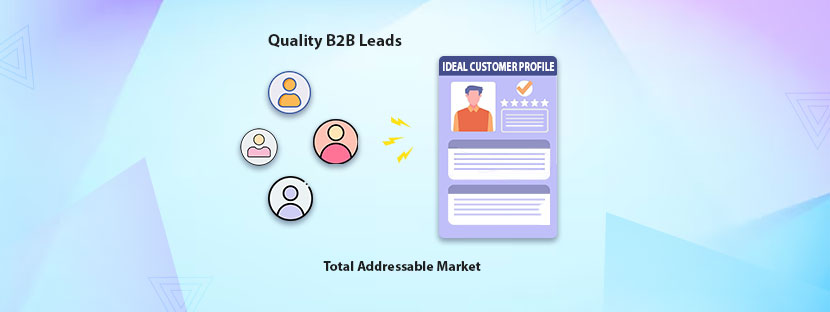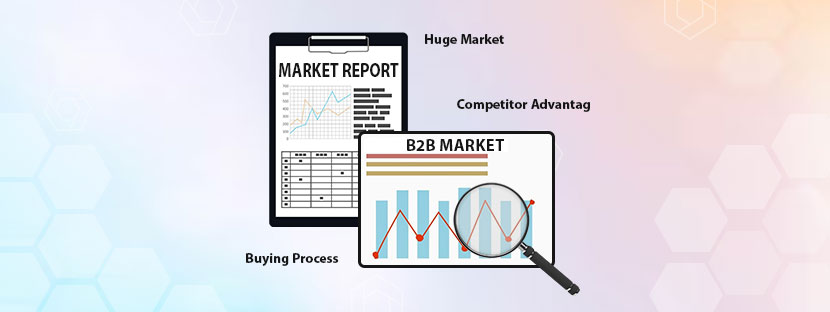Have you done a data accuracy test before?
If you do it often, you already know the importance of accurate data. Unfortunately, if you haven’t run a data accuracy test so far, you must do it now.
You may ask why the data accuracy test. Well, to deploy advanced data enrichment techniques into your database, we must know the condition of your current data. Data enrichment is a powerful mechanism and is used to make your existing data more accurate.
Your sales team may be waiting for more accurate leads or maybe your marketing team waiting to get fresh data. So they can start their work. Working with accurate data always ensures positive returns.
Hence, let’s not make any further delay in exploring new possibilities of your data. This blog aims to detail advanced-level data enrichment techniques and procedures simply for you to utilize them. Hopefully, you can deploy all the techniques to update your existing datasets and explore new dimensions to make better business decisions.
Let’s get started. Shall we?
First, Understand Data Enrichment Purpose
Raw data can have errors in it. Applying raw data for making decisions can lead to bad results or errors (sometimes). To avoid such things, relying on data processing is essential. Data enrichment is a part of data processing that promises to improve the quality of your existing data.
This means applying advanced data enrichment techniques can upgrade your data quality to the next level. It can add more data to your database but not necessarily it would. The goal of enriching data has something more to say;

- Make the flow of data consistent
- Standardize all data formats
- Add new contexts to data
- Rationalize datasets and make them more useful
As you can understand, data enrichment can do many things to your existing data. Thus, you need to set your goal on what you expect from data enrichment. For example, if you’re working with demographic information, you need your prospect profiles to understand their marketing behavior. The data you might be having is related to customer age, their phone number, their purchasing habit, etc. After applying advanced data enrichment strategies, you can have some more information about your prospects.
Shortly speaking, data enrichment can add social media IDs, the location of the prospect, the device they are using, and some additional facts. Using this additional information can help you target your prospect more intensively. You can plan further for personalized marketing once you get the enriched database.
How Data Enrichment Benefits Businesses
At present, data influences every single business decision and sets industry standards. To stay in the competition, making data-driven decisions is super important. You can make it better when you have the right amount of data with you. Well, data enrichment is the process that can help you make your datasets accurate.
When you use the right data in marketing campaigns, you are bound to get more conversions. Quick adoption to the market changes is important and that’s where data enrichment can help. It can also help you more with;
- Providing deep business insights to frame your competitive strategies
- Inserting deep insights into business decision-making can enable precise targeting, providing better customer experiences, and smoothening overall business operations.
Now coming to the analytics part, analysts can help your business reach the right audience only if you provide them with the right data. They apply the latest data insights into the algorithm, models, and analytics to target audiences better. It would increase your chances to engage with more users, understand their behavior, and serve what they need.
Data enrichment also covers data-cleaning operations which makes data clean, comprehensive, and contextually enriched. It’s a detailed process and includes various elements. Find all the details in the next section.
The best way to enhance the existing datasets is data enrichment. It’s an elaborate process that helps data engineers enhance each element of the data. Regardless of industry, they help you enrich your datasets. You can also prefer outsourcing data enrichment services to make your database updated and insightful. Now, let’s quickly check out how they work in the next step-by-step discussion.
Super Unique Data Enrichment Strategies

Data enrichment is the process of improving raw data by supplementing it with additional, meaningful information. This enhances data accuracy, completeness, and usability, leading to better decision-making and analytics. Below are some key data enrichment strategies:
1. First-Party Data Enrichment
First-party data enrichment involves refining and enhancing the data already collected within your organization. This includes:
2. Third-Party Data Integration
Augmenting internal datasets with external sources helps improve accuracy and depth. Examples include:
These external sources provide valuable context, helping businesses personalize marketing efforts and improve customer targeting.
3. AI & Machine Learning-Driven Enrichment
Using AI and machine learning, businesses can extract deeper insights from their data:
These techniques help automate data enrichment while ensuring real-time accuracy.
4. Geospatial & Location-Based Enrichment
Enhancing data with geographic information provides useful insights for targeting and planning:
Businesses in retail, logistics, and real estate particularly benefit from geospatial enrichment.
5. Real-Time Data Enrichment
For businesses that rely on live data, real-time enrichment ensures up-to-date insights:
By integrating real-time APIs and automation tools, businesses can make more agile and informed decisions.
6. Behavioral & Psychographic Enrichment
Understanding customer intent and preferences beyond demographics can significantly improve engagement:
This type of enrichment helps tailor marketing campaigns, improving conversion rates and customer satisfaction.
7. Data Imputation & Missing Value Estimation
Handling incomplete data is crucial for maintaining high-quality datasets:
This ensures that analyses remain accurate despite incomplete records.
8. Data Categorization & Classification
Organizing unstructured data makes it easier to analyze and extract insights:
Structured data improves searchability, reporting, and overall business intelligence.
Data enrichment transforms raw information into actionable insights, improving personalization, decision-making, and operational efficiency. By combining first-party data with external sources, AI-powered analytics, and real-time enhancements, businesses can unlock new growth opportunities and gain a competitive edge.
Advanced data enrichment techniques to level up the game

Working with data is a critical thing and you need special skills to manage it properly. Let’s tackle what techniques we need to implement to make your data crunchy and implementable.
Enhancing Data with Appending
Appending data is a powerful technique that allows you to merge multiple data sources, creating a more complete, accurate, and consistent dataset. By integrating data from various systems—such as your CRM, financial software, and marketing platforms—you can develop a holistic view of your customers rather than relying on fragmented insights from a single source.
Advanced data enrichment through appending also includes integrating third-party datasets, such as demographic statistics, geographic data (e.g., postal code/ZIP-based attributes), or even external factors like exchange rates, weather patterns, and traffic conditions. One of the most commonly enriched datasets is location-based data, as it is widely available and can enhance decision-making in multiple industries.
Next is Data Segmentation
Data segmentation involves dividing a dataset (such as customers, products, or locations) into meaningful groups based on predefined attributes. This approach helps in better categorization, analysis, and decision-making. Before you begin, make sure your database has no errors, only then the segmentation will bear the desire results.
Some common types of segmentation include:
Custom segmentation can also be created using calculated fields within ETL processes or metadata layers, enabling businesses to generate unique customer categories like “Trendsetters” or “Frequent Buyers.”
Now Derived Attributes
Derived attributes are not directly stored in the original dataset but are calculated from existing data fields. These attributes enhance data analysis by ensuring consistency and reducing the need for repeated calculations.
Common examples include:
Advanced-derived attributes can also be generated using machine learning models to predict customer churn, spending propensity, or risk scores.
Coming to Data Manipulation

Data manipulation techniques, such as imputation, help refine datasets by addressing inconsistencies or missing values. Instead of treating missing values as zero (which can distort the analysis), imputation estimates them based on historical trends or statistical methods.
For example, if an order’s value is missing, you can estimate it based on past purchases from the same customer or similar product bundles. This ensures that your dataset remains robust and actionable.
Back to Entity extraction for advanced data enrichment
Entity extraction helps convert unstructured or semi-structured data into structured insights by identifying meaningful entities such as people, locations, organizations, and numeric expressions (e.g., dates, times, currency values).
Practical applications include:
- Extracting a person’s name from an email address.
- Identifying company affiliations based on web domains.
- Parsing address fields into distinct elements like street, city, and postal code.
- By structuring such data, businesses can improve data usability and enhance analytical capabilities.
Finally Data Categorization
Data categorization transforms raw, unstructured data into structured formats, making it easier to analyze. This typically falls into two key areas:
- Sentiment Analysis – Identifying emotions within text-based data, such as customer reviews or social media comments (e.g., positive, neutral, or negative sentiment).
- Topic Classification – Determining the primary subject of text data (e.g., finance, sports, real estate).
These techniques enable businesses to derive meaningful insights from textual data, improving customer engagement and strategic decision-making.
Advanced data enrichment transforms raw data into valuable insights, enhancing accuracy, personalization, and decision-making. By leveraging internal, external, and AI-driven enrichment strategies, businesses can unlock new opportunities and stay ahead of the competition.











